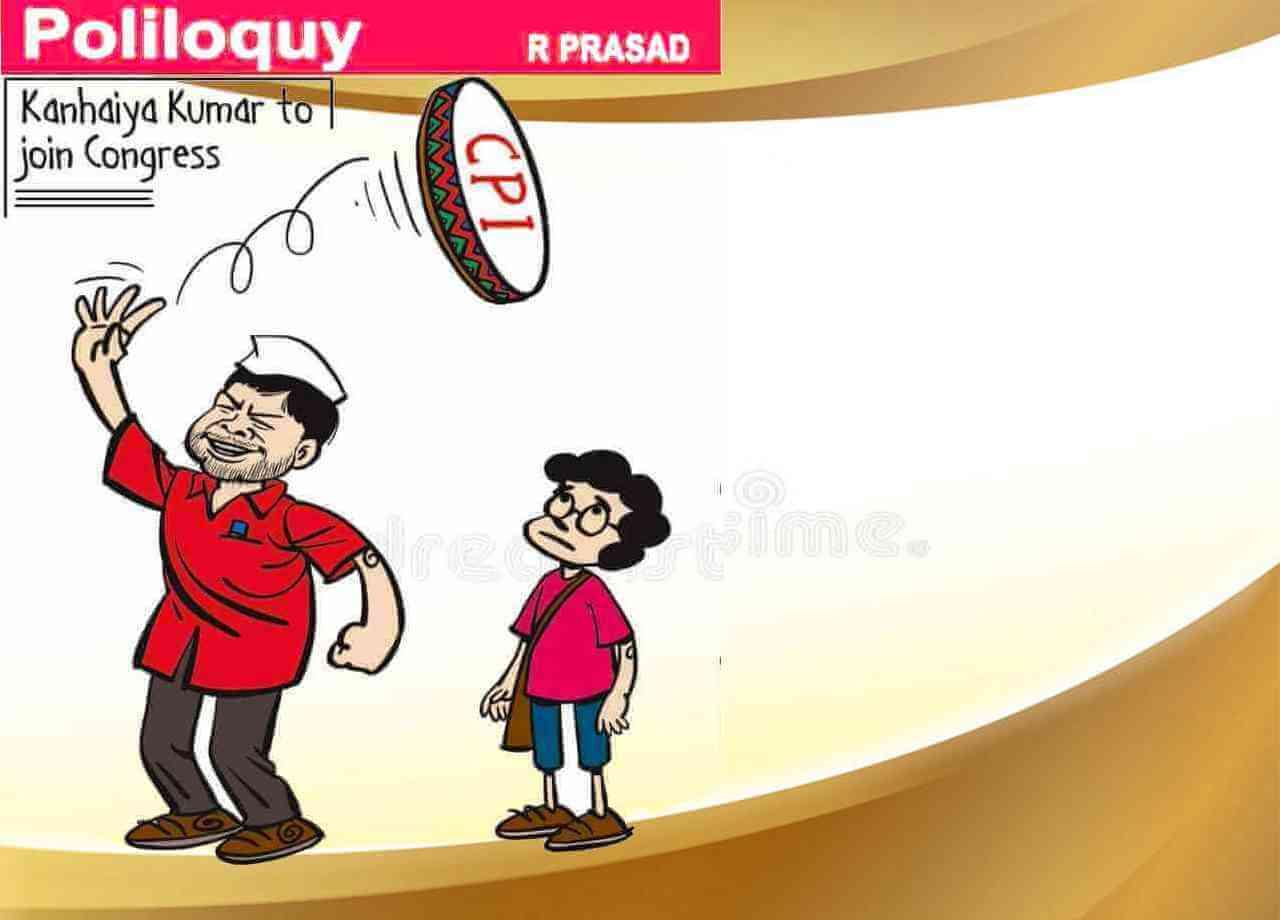by KAVITA KRISHNAN

On September 28, Bhagat Singh’s birth anniversary, Kanhaiya Kumar announced his decision to leave the CPI and join the Congress party. He joined Congress along with Congress-backed Gujarat MLA and Left-leaning Ambedkarite leader of the Dalit movement Jignesh Mevani.
Kanhaiya acknowledged he was “born in the CPI”, but that he felt the need to leave it and join the Congress since the Congress is the only party that can “lead in the ideological war to save the idea of India.”He said that today’s India needs Bhagat Singh’s courage, Mahatma Gandhi’s unity, and BR Ambedkar’s quest for equality, and implied that it was in the Congress that these three essential elements could unite and find a home.
We wish Kanhaiya and Jignesh nothing but success in the political careers of their choice. But the political arguments about fighting fascism offered by Kanhaiya beg several questions and call for closer scrutiny.
Cannot reinvent history
First: Bhagat Singh, Gandhi, and Ambedkar were all, indeed, freedom fighters. But there was never a time in history when they were all at home together in the Congress party. Rather, Bhagat Singh is Bhagat Singh and Ambedkar, Ambedkar, because they chose to embrace revolutionary paths and goals (the cause of socialist revolution in the case of the former and that of Dalit liberation and the annihilation of caste for the latter) beyond the confines of the Congress. In the last phase of his life Gandhi too had distanced himself from the Congress as a political party, choosing to spend his days on riot-torn streets, or striving to ensure peace and justice for Muslim minorities in India. When he was assassinated for this social and moral cause by Hindu-supremacist forces who today rule India, it was not as a political leader of the Congress party. It is simply not possible to reinvent history today and artificially describe the Congress party today as the home for those three figures. One can only seek to do so by reducing them to one superficial dimension each, emptied of the specific ideas and contradictions that are their true gift to us.
The more important and urgent question, however, is this: which forces in India are currently “fighting the ideological war” against the fascists? Can that ideological war be fought better from a Congress platform rather than a Left one?
Can you fight fascism without challenging Hindu-supremacist ideas?
The main feature of fascism, that distinguishes itself from other authoritarian or anti-people forms of politics and state, is majoritarian tyranny and violence against minority communities as well as ideological adversaries, organised and orchestrated by the State in close collusion with a whole range of non-state forces. In India, fascism is Hindu-supremacist ideology and politics, which systematically employs the mainstream media as well as social media and grassroots organisational networks to spread its ideology. This ideology that comprises Islamophobia and the Manuvadi social hierarchies of caste and gender packaged as “social harmony”, and that brands all intellectual, ideological, and political challenges to religious, caste, and gender hierarchies as traitorous attempts to break up the “harmonious Hindu nation.”
The fight against fascism requires us above all to boldly and with all our might resist this fascist ideological and physical offensive against oppressed identities and revolutionary ideologies. It requires us to stand in bold defence of those being victimised as “anti-national” or even as “infiltrators”, rejecting and challenging the claim of Hindu-supremacist ideology to represent “Indian nationalism.”
Links for more
